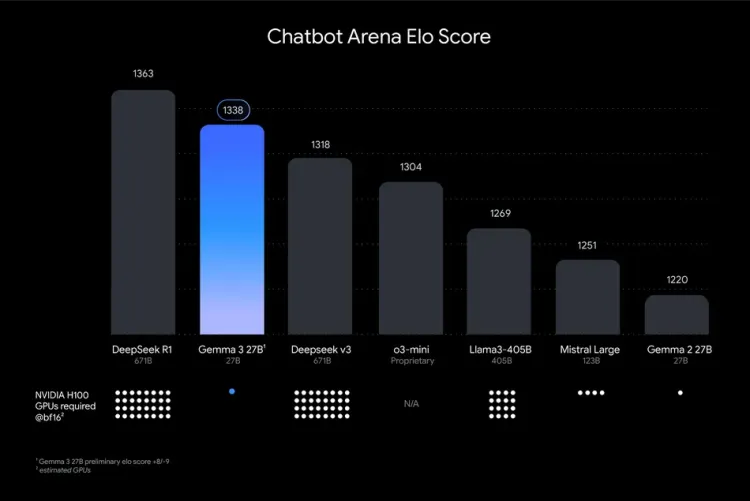Google has launched its newest AI model Gemma 3 on 12th March, marking another step in the evolution of open AI models. Built for efficiency, Gemma 3 is designed to run on a single GPU or TPU, making advanced AI more accessible to developers. Here’s what you need to know about its capabilities and impact.
What is Gemma 3?
Gemma 3 is the latest iteration in Google’s series of open AI models, following the releases of Gemma 1 in February 2024 and Gemma 2 in May. These models provide developers with powerful AI tools that don’t require extensive hardware resources. Gemma 3 is optimized for various devices, including laptops, workstations, and mobile platforms.
Key Features of Gemma 3
Gemma 3 introduces several improvements over its predecessors:
Scalability: Available in 1B, 4B, 12B, and 27B parameter sizes, giving developers flexibility based on their hardware constraints.
Multimodal Capabilities: Supports analysis of text, images, and short videos, broadening its potential applications.
Expanded Context Window: Processes up to 128,000 token which allows2 for greater data comprehension in a single query.
Broad Language Support: Pretrained in over 140 languages with direct support for 35+ languages.
Optimized Efficiency: Designed to run on a single GPU which will help maintain high performance.
Function Calling & Workflow Automation: Helps developers streamline tasks by enabling structured outputs and automation features.

AI Safety: Introducing ShieldGemma 2
To address concerns around AI safety, Google has also launched ShieldGemma 2, a 4B-parameter model dedicated to detecting harmful content. It classifies material into categories such as explicit content, dangerous substances, and violence, providing developers with an additional layer of security when working with AI-powered applications.
Accessing Gemma 3
Developers can explore Gemma 3 through various platforms:
Google AI Studio: A web-based tool for testing the model.
Hugging Face & Kaggle: Available for download for further experimentation.
API Access: Developers can request access via Google AI Studio for integration into their applications.
What This Means For AI Development
The AI landscape continues to evolve rapidly, with companies like Meta, OpenAI, and DeepSeek competing for dominance. Google’s approach with Gemma 3 is focused on making AI more accessible without requiring expensive hardware. By improving efficiency and expanding its capabilities, the model contributes to the broader adoption of AI across industries.
Conclusion
With broader language support, multimodal capabilities, and a focus on safety, Google Gemma 3 could provide new possibilities for AI-driven applications.
For those interested in testing the model, platforms like Google AI Studio, Hugging Face, and Kaggle offer direct access. Stay updated as we continue covering developments in AI and technology.
Visit Odel Tech for more technology news, launches and updates on the latest gadgets and trends!

